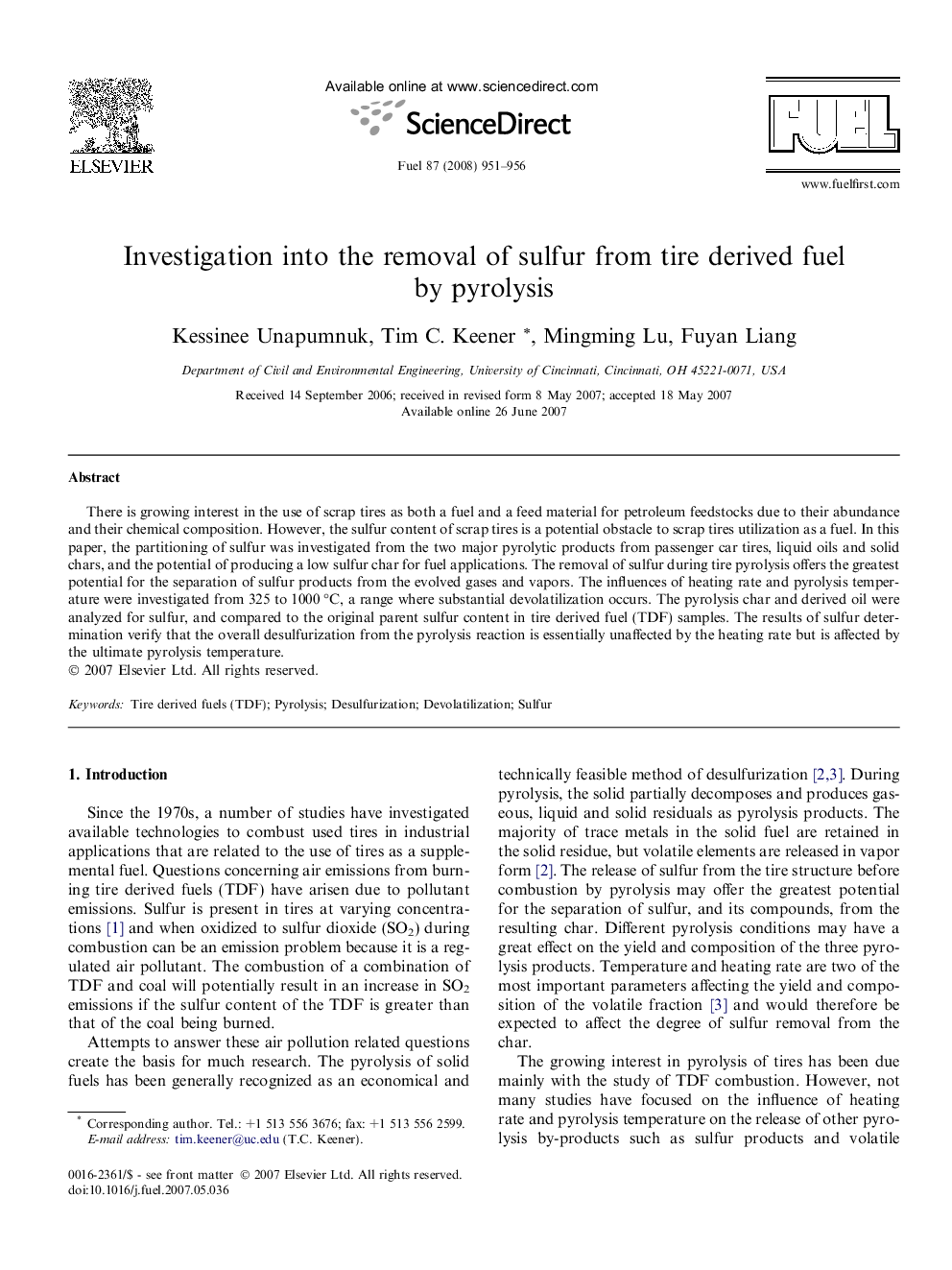| Article ID | Journal | Published Year | Pages | File Type |
|---|---|---|---|---|
| 207773 | Fuel | 2008 | 6 Pages |
There is growing interest in the use of scrap tires as both a fuel and a feed material for petroleum feedstocks due to their abundance and their chemical composition. However, the sulfur content of scrap tires is a potential obstacle to scrap tires utilization as a fuel. In this paper, the partitioning of sulfur was investigated from the two major pyrolytic products from passenger car tires, liquid oils and solid chars, and the potential of producing a low sulfur char for fuel applications. The removal of sulfur during tire pyrolysis offers the greatest potential for the separation of sulfur products from the evolved gases and vapors. The influences of heating rate and pyrolysis temperature were investigated from 325 to 1000 °C, a range where substantial devolatilization occurs. The pyrolysis char and derived oil were analyzed for sulfur, and compared to the original parent sulfur content in tire derived fuel (TDF) samples. The results of sulfur determination verify that the overall desulfurization from the pyrolysis reaction is essentially unaffected by the heating rate but is affected by the ultimate pyrolysis temperature.
